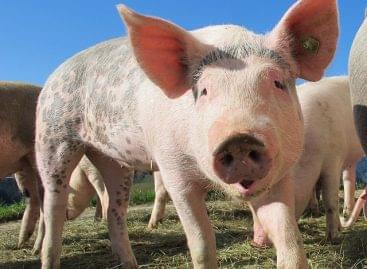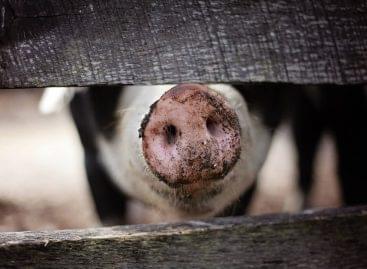The price of pork will continue to decrease
A few weeks ago, Zoltán Fórián, the Chief Agricultural Expert of the Erste Agrar Competence Center, predicted a shift in the pork market for September. As we enter the latter half of August, this prediction has already come to pass. Our expert contributor sheds light on the global market trends behind this fluctuation.
German Pork Price Decline
Partially attributed to the weather, the drop in German pork prices is largely influenced by the rainy season which narrows the market for backyard barbecues. Germany’s tight meat industry demand quickly felt the impact. Although the weak grilling season was the final push, the sustained decrease in demand has become a prevailing factor in the German market. After no pigs were sold in the online auction last week, producers realized they needed to lower their prices. The price per kilogram of pork, which decreased from 2.5 to 2.3 euros, is expected to drop further. The decline in demand has caught up with pork supply, resulting in even less demand for fewer pigs. This reduction in processing aligns with a decrease in exports. The average weight continues to rise, indicating an oversupply of live animals. This further suggests that the price decline is not yet over.
Concurrently, German piglet prices have also decreased, following their usual pattern of stagnation for a few weeks. The current price stands at 88 euros for a 25-kilogram piglet.
Increasing Concentration in Supply
There are around 50 corporate groups globally in the pork sector that own more than 100,000 sows each. This is ten more than in the previous report. Referring to the list published by Genesus, an international breeding company, according to agrarheute, these 50 giants collectively manage nearly 16.5 million sows. This is an increase of 635,428 animals from the previous year. Out of the 50 mega-producers, 24 are based in China, 12 in the United States, 4 in Brazil, 3 each in Spain and Russia, and 1 each in Thailand, South Korea, and Chile. The Chinese company Muyuan Foodstuff Co., Ltd. leads the list with 2.815 million sows. The company produced 61.2 million pigs and processed 7.36 million in 2022. The second-largest producer, also from China, is Wen’s Food Group Co., Ltd., with 1.4 million sows, an increase of 300,000 compared to the previous year. Wen’s produced 17.91 million pigs last year. The third-largest mega-producer is the American-owned (though Chinese) Smithfield Foods / WH Group, which had 1.225 million sows in 2022. The first European group ranks 19th on the list. Vall Companys from Spain maintained 260,000 sows in 2022, an increase of around 50,000 from 2021. Costa Food Group is the 29th on the list, also from Spain, with 155,000 sows. The third and final European company on the list is also from Spain: Grupo Jorge ranks 43rd with 105,000 sows. This company has recently climbed the ranks.
Related news
K&H: significant price drop in the pork market
🎧 Hallgasd a cikket: Lejátszás Szünet Folytatás Leállítás Nyelv: Auto…
Read more >The price of slaughter pigs has decreased in Hungary and in the EU
🎧 Hallgasd a cikket: Lejátszás Szünet Folytatás Leállítás Nyelv: Auto…
Read more >Institute of Agricultural Economics: poultry meat exports increased, pork meat exports decreased
🎧 Hallgasd a cikket: Lejátszás Szünet Folytatás Leállítás Nyelv: Auto…
Read more >Related news
How do young adults celebrate?
🎧 Hallgasd a cikket: Lejátszás Szünet Folytatás Leállítás Nyelv: Auto…
Read more >Vajda-Papír celebrates Ooops!’s 15th anniversary with a hybrid AI campaign
🎧 Hallgasd a cikket: Lejátszás Szünet Folytatás Leállítás Nyelv: Auto…
Read more >Pre-holiday shopping at up to half price
🎧 Hallgasd a cikket: Lejátszás Szünet Folytatás Leállítás Nyelv: Auto…
Read more >






